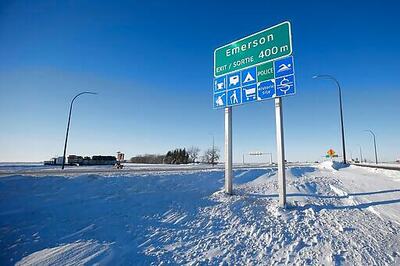
views
Cast: Manoj Bajpayee, Tia Bajpai, Arjan Bajwa, Yashpal Sharma, Yatin Karyekar
Director: Maqbool Khan
A good performer can lift up the spirit of the whole team and can turn an otherwise simple story into an emotion filled drama. 'Lanka' couldn't have been the same film without Manoj Bajpayee.
The story opens up in Mumbai but the first flashback takes the audience to a small town Bijnor in Uttar Pradesh within minutes.
Jaswant Sisodia (Manoj Bajpayee) is Don Corleone of Bijnor, probably Sisodia is more powerful than Don Corleone in his own den.
The dreaded devil sets eyes on an unfortunate girl Anju (Tia Bajpai) and decides to 'love' her in order to protect the girl from other vultures of the area.
The girl's family, more precisely the father, couldn't do anything about Sisodia's frequent visits to the girl's bedroom.
The girl attempts suicide too but the misfortune keeps her alive. Now she is waiting for an angel who would set her free from the clutches of the dark lord.
The name 'Lanka' is quite apt for the film as the backdrop is heavily inspired from the Indian mythology. Manoj Bajpayee is true 'Raavan' of his 'Lanka' while the characters of Tia Bajpai and Arjan Bajwa are modelled on the lines of Sita and Vibhishana.
The opening sequence of the film features a promising Tia Bajpai who gets hyper the moment she sees a wife basher. The writer has shown smartness by justifying the flashback. Otherwise Bollywood writers use flashbacks more for the sake of style than explaining the story line.
Use of red colour in the opening credits prepares the spectators for a frightening journey which starts the second it enters into Bijnor. Though the writer has tried hard to unfold the story from the girl's point of view, it becomes Arjan Bajwa's perspective at more than one occasion.
Little details have been taken care of. Jaswant Sisodia wears shirts with 'JS' imprinted on the pocket. His car has 'SISODIA' written in place of the number plate. The use of actual locations and typical symbols of western Uttar Pradesh has provided authentication to the story but small mistakes are not wiped absolutely.
How can attacking villagers leave the motorcycle of Arjan Bajwa at the same spot? Continuity jumps can be seen too.
The film follows the classic style of narration and does not hesitate in playing with the stereotypes. Arjan Bajwa, who is the last hope for Anju, returns from a big city as the local people have accepted the supremacy of Bhai sahib aka JS.
Surprisingly, Arjan Bajwa does not have a name in the film but it's hard to notice due to sleek dialogue writing.
Several films have been made on the subjects related to western UP but one thing that was common in all of them was the excessive use of abuses. 'Lanka' deliberately avoids abuses and it makes the film more suitable for the family audiences but normal conversations in this part of the globe do not shy away from abuses.
Arjan Bajwa's character does not speak much in the film and it works in his favour because his urban accent is noticeable. He plays a character that was expected to be cynical and hard willed. Bajwa appears more like a helpless person than a constrained individual.
He seems a very controlled human being even in the scene where he kills seven people despite being injured. It's not like he has done shoddy job but the actors in front of him were completely in command of the situation.
Take Manoj out of the 'Lanka' and it will become a 'Kiskindha'. He has some problems in capturing the true style of Bijnori dialect but he manages it with killer pauses. Bajpayee's character is an out and out criminal but he has done the role with such fineness that it seems more like a grey character than a hardcore villain.
Sisodia takes Anju's father (Yatin Karyekar) to a prostitution centre just before the climax where he breaks Karyekar's all hopes of being free. In this scene, Bajpayee brings out the complexity of the character in such a way that it remains with the audiences even after the film.
Manoj Bajpayee and Yashpal Sharma have come up with some really sparkling sequences in the film. Their chemistry is radiant and more importantly spontaneous. The killing of Yashpal Sharma midway may look uncalled for to some viewers as he emerges as a strong opposition to Jaswant Sisodia before being murdered.
Tia Bajpai's husky voice works in favour of the character. Tia's mole makes her non-glamorous and closer to the character. The director Maqbool Khan should be praised for the courage of taking Tia as heroine against traditional Bollywood norms.
Maqbool Khan has shown the glimpses of his latent potential in 'Lanka'. The promoters of the film could have helped Khan with a little more promotions.
Metaphors as a spotless girl with white clothes amidst the Holi celebration are easy to pick and understand.
The editing is not much perceptible in the film which compliments the story in a way but there are sequences in the film which required more chopping. The fight between Jaswant's men and some villagers could have been made sleeker by cutting down the extra duration of the fight. Similarly, some direct cutting could have replaced additional fade outs.
The cinematography department does not try anything exceptional; still it excels in one sequence where Jaswant along with his team invades a rival village. The idea of top shot to show chaos in the village works well.
Songs and the background score are as per the requirement. Shweta Salve's item number 'Hay Rama Rama' is not more than any other ordinary item song. Other songs refuse to shine too. 'Sheetlahar Si' is the only song that leaves its mark to some extent.
The film does not touch the seriousness level of 'Maqbool' which also had the central theme similar to 'Lanka'. Neither the characterisation is like 'The Life of Others' where the girl had the motive to succumb under the pressure exerted by the ruthless minister.
What the girl does in the end, could have been possible in the beginning too.
It's understandable that some characters should be taken as they are but a sane and well educated human being should have perfect reasons to not revolt.
Manoj Bajpayee holds the story together and it was a well figured out plan in the director's mind to keep him on the screen in almost three quarters of the film.




















Comments
0 comment